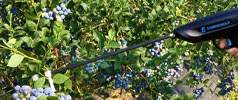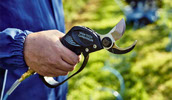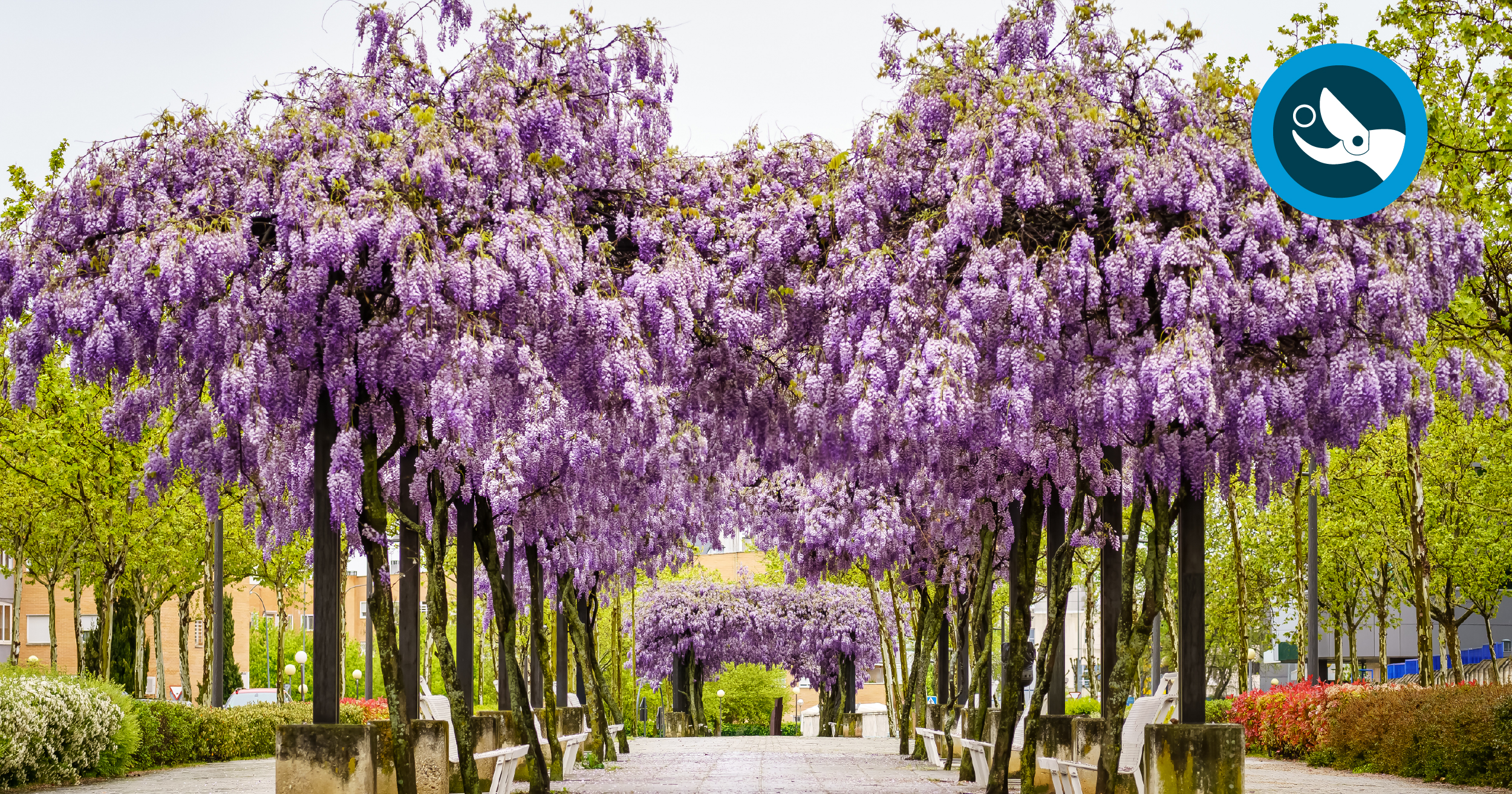Ornamental trees are the undeniable stars of gardens, parks, and public spaces. Proper pruning of these plants not only promotes their physiological well-being but also plays a crucial role in enhancing the aesthetic value of tree-lined avenues, urban hedges, gardens, and flowerbeds. A harmonious, well-proportioned, and well-ventilated canopy makes any green space look more organized and welcoming, whether in a private garden or a public park.
Pruning ornamental trees is also an act of care that improves the vitality of the foliage, promotes flowering, strengthens the plant’s structure, and provides balance to the tree’s shape. Different pruning approaches can be distinguished: from decorative pruning, which highlights the plant’s silhouette, to containment pruning for managing size and vigour, and even rejuvenation pruning, designed to encourage the growth of new branches and flowers.
Each ornamental plant has a unique growth behaviour, requiring specific pruning periods and techniques. Therefore, recognizing the specific needs of each species is the first step in ensuring effective and respectful pruning. In this article, we will explore how to care for three of the most popular and beloved ornamental plants: wisteria, magnolia, and oleander.
Pruning Wisteria: How and When to Prune
Wisteria is one of the most popular ornamental climbers, known for its spectacular spring blooms and its ability to elegantly cover pergolas, fences, and walls. However, to keep its growth under control and ensure abundant flower clusters each year, it is essential to plan regular pruning.
When is the best time to prune wisteria? There are two main periods: late winter and summer, each with specific purposes.
Late Winter Pruning: Before the plant’s active growth phase begins, focus on its structure by shortening the shoots from the previous year, leaving only a few buds per branch (usually 2 or 3). This type of pruning stimulates spring flowering, limits excessive spread, thins out tangled branches, and removes dead or damaged wood. It is also the right time for more intensive pruning, such as rejuvenation pruning, especially for neglected plants.
Summer Pruning: This is done after the first bloom and involves lighter cuts aimed primarily at controlling the vigorous growth that occurs during the warm season. Overly long shoots or those without flower clusters should be trimmed to improve light penetration, encourage secondary flowering, and maintain order on support structures.
Pruning Techniques for Wisteria on Pergolas, Walls, and Balconies
Wisteria is a climbing plant with remarkable vegetative strength, capable of growing rapidly and covering large surfaces. For this reason, it requires careful and consistent management, especially when grown on pergolas, walls, or balconies.
To properly shape the plant, it is crucial to identify the main shoots, which serve as the structural branches defining the desired architecture. These should not be drastically shortened but instead carefully secured along the supports in a neat and well-distributed manner. The stability and harmonious shape of the plant depend on this initial structural choice.
Once the main shoots are established, the next step is to manage the lateral or secondary shoots, which grow abundantly during the growing season. These should be pruned, leaving only a few buds to stimulate flower production in the right places and prevent excessive, disorganized growth. Without these interventions, wisteria can grow chaotically, potentially damaging gutters, shutters, railings, or other building elements.
Regular pruning is essential to maintain the plant’s aesthetic appearance, safety, order, and longevity. The right pruning tools and a well-planned cutting schedule are all you need to guide the wisteria through its evolution, year after year.
Pruning Magnolia Soulangeana and Grandiflora: Timing and Techniques
Elegant and majestic, magnolia is one of the most beloved ornamental trees in both public and private gardens. However, behind the beauty of its large blooms lies careful management of its canopy. The main magnolia varieties found in green spaces are:
- Deciduous varieties, such as Magnolia soulangeana, a deciduous species that blooms in early spring, showcasing its large white-purple flowers even before the leaves appear.
- Evergreen varieties, such as Magnolia grandiflora, which produces its large white blossoms in the summer months, offering prolonged and intensely fragrant blooms.
Knowing how and when to prune magnolia is essential. Proper management of this ornamental tree enhances its scenic effect, which is so admired in any green space.
In general, magnolia should always be pruned lightly and preferably after it has finished blooming. This prevents the risk of removing flower buds that have already formed. Autumn pruning should always be avoided, as it can interfere with the formation of future buds and expose the plant to diseases if temperatures drop.
In general, it is important to know that pruning magnolia is not an essential task. Its wood is highly sensitive to cuts and tends to heal slowly. Therefore, it is best to limit pruning to the removal of dead, damaged, or poorly positioned branches and to thinning the canopy only when necessary for structural or containment reasons.
Always perform cuts using high-performance and perfectly clean tools, choosing dry days to minimize the risk of fungal infections.
How to Prune a Tall Magnolia Tree
When a magnolia tree reaches significant height, it becomes essential to carefully manage its branches to maintain a good balance between height, shape, and the plant’s overall health. Pruning tall magnolia trees is primarily aimed at controlling their growth, maintaining a neat canopy, and ensuring good airflow and light penetration among the branches.
Key Guidelines for Pruning Tall Magnolia Trees:
- Prune with Caution: Magnolia trees are sensitive to heavy pruning, so always limit your interventions. Focus on removing damaged, diseased, or crossing branches, making selective cuts to keep the tree in perfect balance.
- Use Long-Reach Tools: For higher branches, rely on pole pruners that allow you to work comfortably from the ground, ensuring safety without the need for ladders.
- Avoid Drastic Cuts: Maintain the tree’s natural shape without overly reducing its size. Excessive pruning can stress the tree and slow its recovery.
- Consider Professional Help: For complex pruning tasks or when dealing with particularly large specimens, it is advisable to contact a professional arborist. They can assess the situation and use appropriate equipment to perform the pruning safely and effectively.
Pruning Oleander: From Hedges to Small Trees
Among the most popular ornamental plants in Mediterranean gardens, oleander stands out for its resilience, long summer blooming season, and ability to adapt to various forms, from compact hedges to standalone small trees. However, to maintain its beauty over time, regular pruning is essential.
When to Prune Oleander: Ideal Timing
The best time to prune oleander depends on the plant’s characteristics and the climate zone in which it grows. Generally, pruning is done after flowering, at the end of summer or the beginning of autumn, as this period makes it easier to identify the branches that produce new shoots.
- In mild climates, oleander can also be pruned between late winter and early spring, always before budding begins.
- In colder regions, it is preferable to wait for milder temperatures, avoiding the risk of late frost damage.
Why Regular Pruning is Important
Regular pruning helps maintain the plant’s shape, encourages the production of new shoots, and promotes more abundant flowering. It is also a good practice to remove dry or faded branches to:
- Stimulate the growth of fresh shoots.
- Ensure a more abundant and healthy bloom.
- Maintain a neat appearance for the plant.
- Reduce the risk of fungal diseases caused by moisture retention among the leaves.
Pruning Techniques: Oleander in Ground or as a Small Tree
The pruning methods for oleander vary depending on the desired shape and the environment where it is grown.
- Containment Pruning: This method is useful for controlling the plant’s growth, especially when used as a hedge or cultivated along fences and borders. In this case, the outer branches are trimmed to maintain a compact, well-proportioned canopy.
- Formative Pruning: This is performed during the plant’s early years to guide its development. If you wish to grow oleander as a small tree, it is essential to select a strong central trunk and gradually remove the lower lateral branches. This helps build a stable, well-balanced structure with a globe-shaped and harmonious canopy.
- Drastic Pruning: In situations where the plant has grown in a disorganized manner or has suffered damage (e.g., due to frost or incorrect pruning), drastic pruning can be an option. This procedure stimulates vigorous regrowth but should only be performed on well-established and healthy plants.
Tools, Safety, and Respect for the Plant
To properly prune ornamental trees, it is essential to choose the right tools and use them while respecting the plant’s health. Sharp, carefully cleaned tools allow for clean, smooth cuts, preventing trauma, infections, and wounds that are difficult to heal. Additionally, observing the plant’s growth behaviour helps identify the right time to prune without affecting blooming and new shoots.
Those who aim for professional results can rely on a complete range of Campagnola tools, designed to optimize every pruning task in ornamental, public, and private green spaces.
Among the electric chain pruners equipped with a plug-in battery, suitable for working with maximum freedom of movement, there are T-FOX and T-REX, ideal for precise operations and capable of reaching even the highest branches with the pole versions T-REX 160-240 and T-REX 250-300. If you are looking for compactness, there is also T-CAT M V1, lightweight and easy to handle, suitable for public and domestic green maintenance or finishing operations in professional settings.
For intensive operations, KRONOS 58 is one of the best electric chain pruners mounted on a fixed carbon pole, available in two sizes (120 or 160 cm), which give the tool a total length of 190 or 230 cm. KRONOS 58 is powered by the powerful LI-ION 700 lithium-ion backpack battery, which is comfortable (featuring an ergonomic backpack), lightweight (only 3.7 kg), and offers high autonomy (over 600 cuts Ø 10 cm).
If you prefer working with pneumatic technology, you can choose chain pruners like LASER, LINX, or AUTOLUBE M.3. These are reliable and versatile tools suitable for various types of plants and particularly effective when a combination of speed and power is required.
Pneumatic pruning shears and pneumatic loppers are also widely used in ornamental green management. For example, the STAR 40 with an adapter is a lightweight pruning shear with high-strength forged steel blades, which can be used in combination with all Campagnola extension poles (fixed or telescopic, in aluminium or carbon fibre). On the other hand, STAR 50 is a robust and precise lopper designed for professional use on even the thickest branches. Additionally, the model F/6 U is available, equipped with a hooked movable blade for gripping branches.
If you prefer more manageable shears with interchangeable plug-in batteries, you can rely on models such as STARK XM, STARK XL, and STARK 90-160-220 V1, known for their ergonomics, precision, and compatibility with accessories, extension poles, and other tools in the same range.
The GREEN Line also includes the new SL32 V1, which is versatile due to its use in livestock management (with specific blades available separately, dedicated to trimming the hooves of sheep and goats).
Moreover, the PROFESSIONAL Line by Campagnola includes the latest NOVA 35 and NOVA 40 models, Made in Italy and powered by Extra Performance batteries. These shears connect to your smartphone via the advanced MyCampagnola app, allowing you to customize your pruning operations.
Finally, let’s not forget about manual tools such as pruning shears, loppers, and saws, which are essential for small touch-ups or for non-intensive use.
Would you like to learn more about Campagnola tools dedicated to pruning ornamental trees? Contact us or find the nearest dealer for personalized advice and competent assistance even after your purchases.
A comprehensive guide to pruning the most common ornamental trees: wisteria, magnolia, and oleander. Techniques, ideal periods, and recommended tools for effective and respectful pruning, both for home and urban environments.

















































